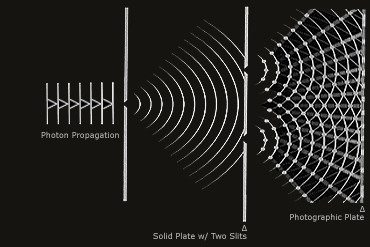A groundbreaking experiment conducted by Dean Radin Ph.D., presented at the 2016 Science of Consciousness Conference in Tucson, Arizona, demonstrates that consciousness can influence matter, and consequently, reality—regardless of the distance between the observer and the experimental apparatus.
For years, scientists have debated the profound implications of consciousness and its relationship to quantum mechanics. Numerous respected researchers have posited that consciousness plays a pivotal role in quantum measurements, suggesting that it directly impacts the physical properties of matter and shapes the reality perceived by each observer. However, some skeptics have dismissed these ideas without conducting thorough research.
Dean Radin Ph.D., from the Institute of Noetic Sciences, challenged this skepticism with a series of experiments based on variations of the classic double-slit experiment. These studies showed that simple observations by people from all around the globe significantly reduced the wave-pattern of particles in nearly all cases, regardless of distance—providing evidence for a clear connection between consciousness and reality.
Notable studies include:
- Consciousness and the Double-Slit Interference Pattern: Six Experiments
- Psychophysical Interactions with a Double-Slit Interference Pattern
The conference audience comprised esteemed scientists and philosophers, indicating that the scientific community is moving closer to acknowledging the significance of consciousness in our understanding of reality. Enjoy the video!
Video source: Institute of Noetic Sciences : IONS
A Significant Breakthrough: Independent Replication
Exciting news emerged on August 24, 2017, when physicist and former CERN researcher Gabriel Guerrer independently replicated the study we mentioned earlier, which showcased the influence of consciousness on matter and reality. This replication serves as a major milestone in reinforcing the study’s credibility.
Guerrer’s paper reports a striking 6.37 sigma significance in the replicated results, highlighting the robustness and importance of the findings. In the study, participants were tasked with alternating between intending to increase the amount of light diffracted through a specific single slit (informed by real-time feedback) and relaxing any intention effort. The data collected from 127 volunteers revealed a statistically significant difference between measurements taken during intention and relaxation phases. Meanwhile, the 160 control sessions conducted without an observer yielded statistically equivalent samples.
The abstract of the replicated paper sums up these compelling findings, which lend further credence to the idea that there exists an uncharted form of interaction between a conscious agent and a physical system. The replication of the study by a respected physicist demonstrates that the scientific community is taking these findings seriously and making strides toward a more comprehensive understanding of the relationship between consciousness and reality.

